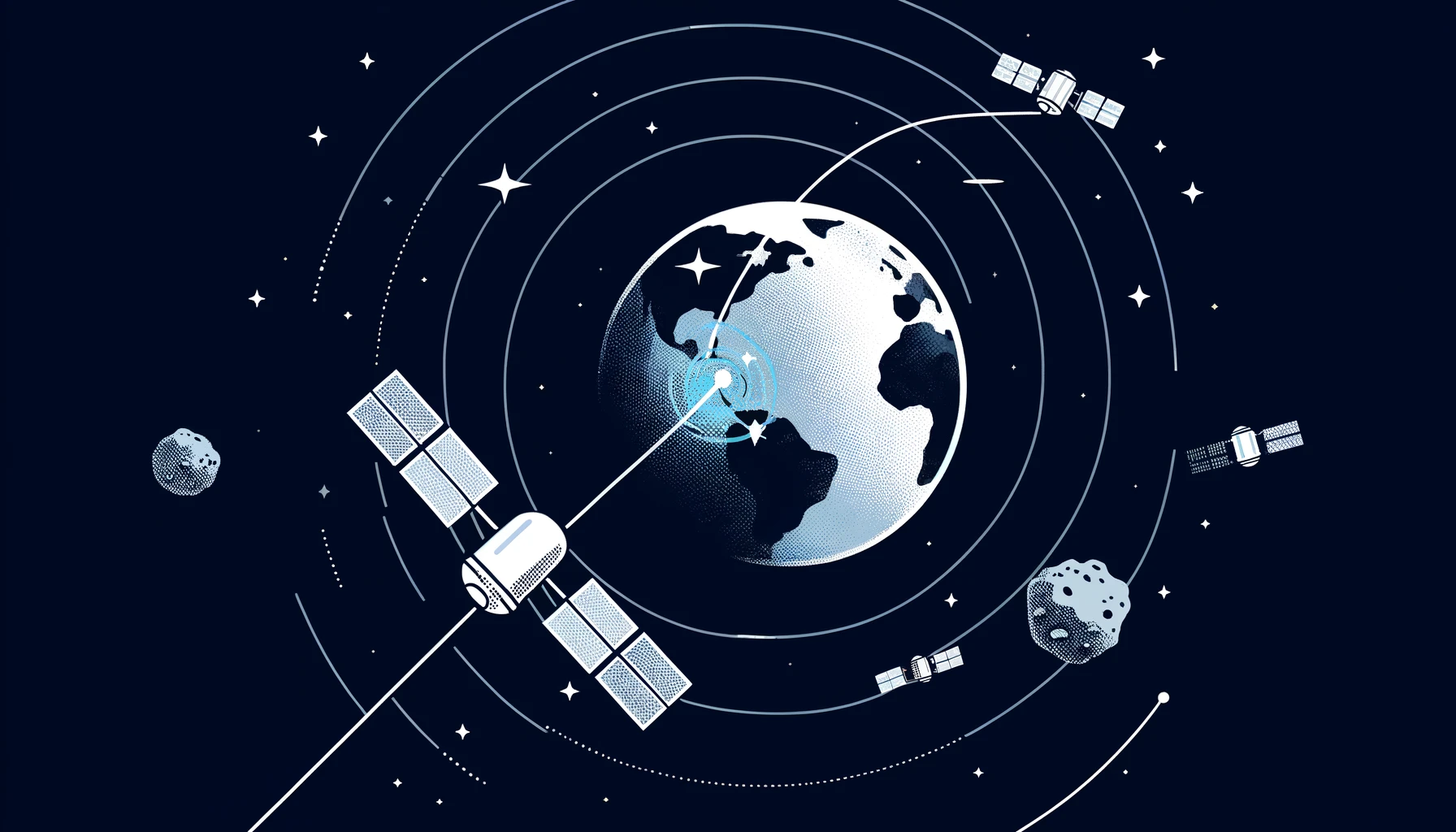
In an unprecedented mission, a Chinese Jilin-1 satellite averted a potential asteroid disaster by accurately tracking the trajectory of asteroid 1994 PC1. The asteroid, as large as San Francisco’s Golden Gate Bridge, posed a potential threat, but its actual position was difficult to pinpoint due to its two million km distance from Earth—five times the distance of the moon.
The Jilin-1 satellite, typically used for Earth observation, executed a groundbreaking maneuver in January 2022. Instead of observing Earth, it flipped over to aim its lens into space, capturing images of the asteroid every second. These images allowed scientists to reduce the orbit positioning error of 1994 PC1 to just 33 km, enhancing the accuracy of ground-based telescopes by two orders of magnitude. This precision confirmed that the asteroid was not on a collision course with Earth, ensuring it would pass safely by.
A detailed analysis of the satellite’s capabilities revealed that tracking the asteroid was technically feasible but required significant adjustments. The project team, led by Professor Liu Jing from the National Astronomical Observatory of the Chinese Academy of Sciences, reprogrammed the satellite to adjust its altitude continuously during orbit motion for fixed-point gaze imaging on the asteroid.
- Mission Period: January 17-21, 2022
- Imaging Duration: 15 seconds per mission
- Total Shooting Tasks: 51
The mission’s primary objective was to enhance the accuracy of asteroid tracking using existing space-based Earth observation systems. The success of this mission demonstrates the powerful observation capabilities of Chinese satellites and their potential to protect humanity from high-risk asteroids. However, it has also raised concerns among Western countries, particularly the United States, about the dual-use potential of these capabilities for military purposes.
China’s Jilin-1 constellation, consisting of over 100 satellites, is the largest Earth observation network in operation. These satellites can quickly capture high-resolution images of almost any location on Earth, tracking targets such as an American F-22 fighter jet and rocket launches. Despite these capabilities, targeting asteroids in deep space posed unique challenges that required innovative adjustments.
- Key Adjustments: Exposure parameters of optical sensors
- Collaborative Efforts: Coordination with two large ground observation stations in Beijing and Xinjiang
Comparison of Global Space Assets
While China’s space observation capabilities are impressive, the United States leads in the number of space assets, with over 8,000 satellites currently in orbit. However, most US satellites, like SpaceX’s Starlink, are primarily used for communication rather than intelligence gathering.
Global Space Assets Comparison
| Country | Number of Satellites | Primary Use |
|---|---|---|
| United States | 8,000+ | Communication (e.g., SpaceX’s Starlink) |
| China | ~670 | Intelligence, Surveillance, and Reconnaissance (ISR) |
The rapid growth of China’s space observation system, including Jilin-1, has prompted concerns within the US military about potential threats to its forces. General B. Chance Saltzman, chief of space operations, highlighted the risks posed by China’s intelligence, surveillance, and reconnaissance (ISR) satellites, which contribute to creating “kill webs”—a network of sensors and shooters that could threaten US military operations.
- General B. Chance Saltzman: “China’s ISR satellites create unacceptable risk to our forward-deployed force.”
- Kelly D. Hammett: “The US is potentially falling behind in the race against China’s space warfighting capabilities.”
The US military is actively working to build new capabilities and assets to compete with China’s growing space power. However, officials warn that the current force structure may not be sufficient to deter and win against the vast array of Chinese space assets.
China plans to continue honing its space observation skills to protect humanity from potential asteroid threats. Future experiments will involve observing fainter near-Earth asteroids using existing space-based equipment. The project team also aims to incorporate a large ground-based radar network to enhance tracking and targeting accuracy further.
Key Future Plans:
- Observations: Conduct follow-up experiments to observe fainter near-Earth asteroids
- Enhancements: Integrate a large ground-based radar network for improved accuracy
In conclusion, while the mission to track asteroid 1994 PC1 highlights the advanced capabilities of Chinese satellites, it also underscores the growing concerns among Western countries about the potential military applications of these technologies. As space becomes an increasingly contested domain, the balance of power in space observation and defense will continue to evolve, with significant implications for global security.
Related News:
Featured Image courtesy of DALL-E by ChatGPT
